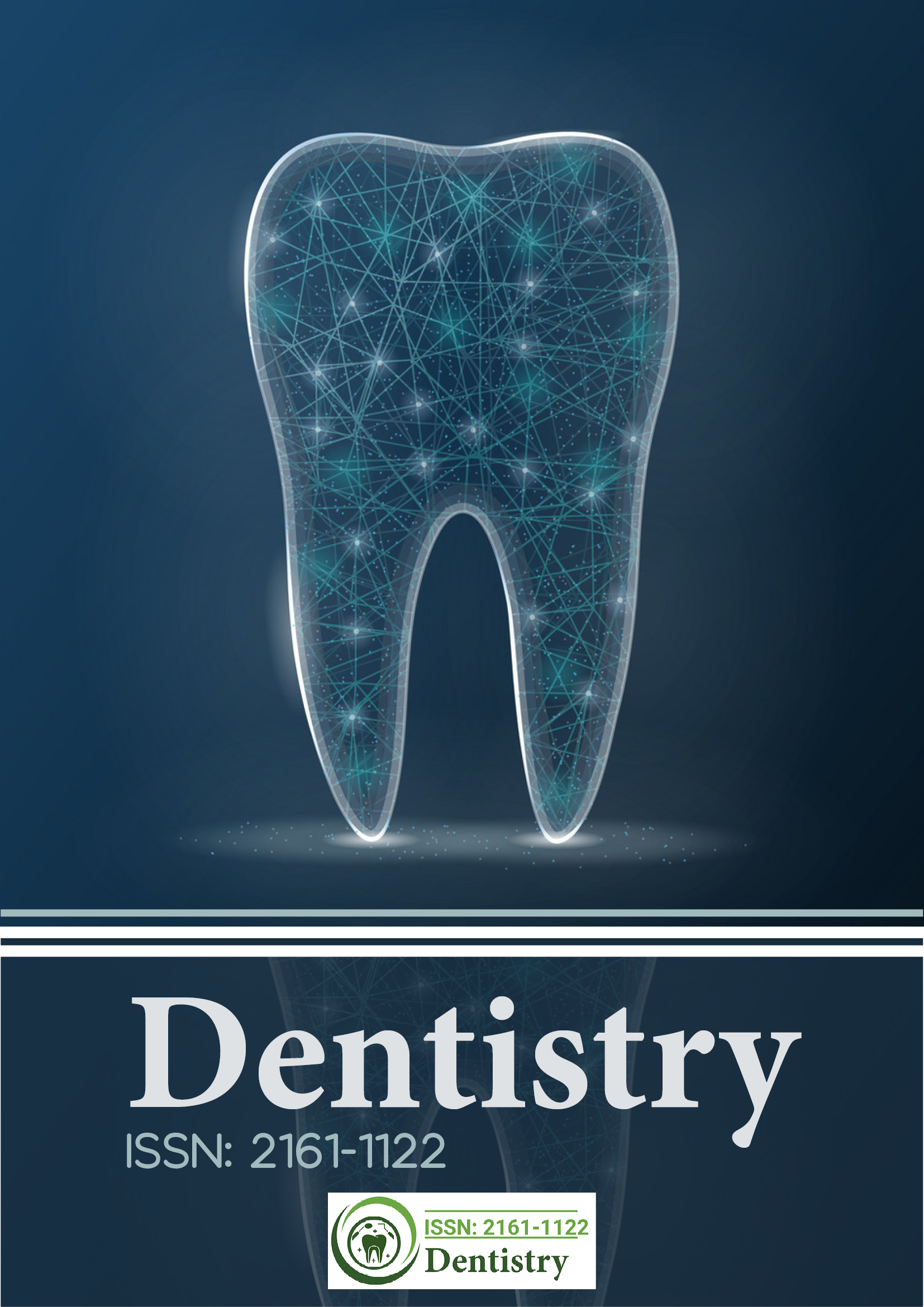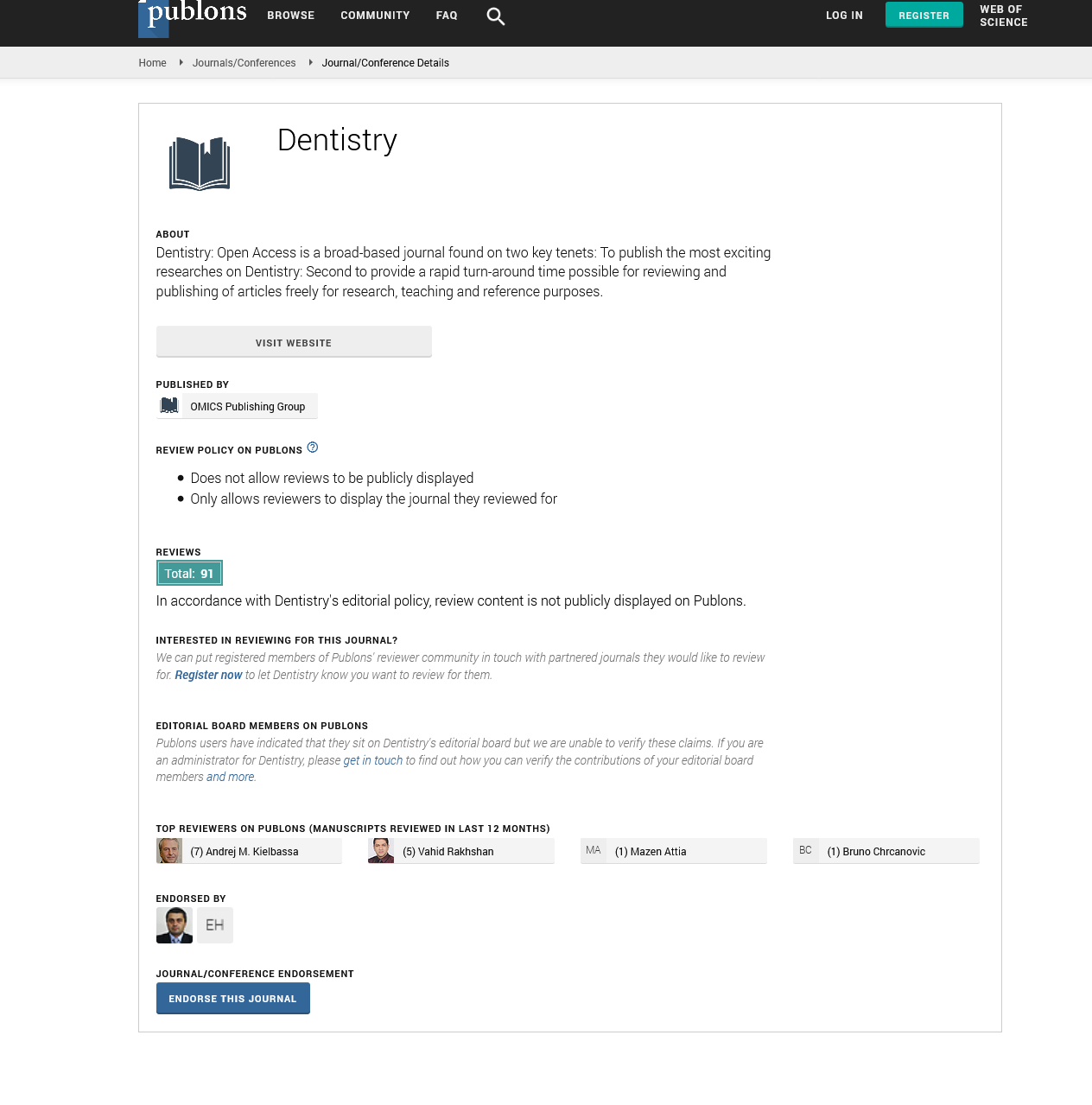Citations : 2345
Dentistry received 2345 citations as per Google Scholar report
Indexed In
- Genamics JournalSeek
- JournalTOCs
- CiteFactor
- Ulrich's Periodicals Directory
- RefSeek
- Hamdard University
- EBSCO A-Z
- Directory of Abstract Indexing for Journals
- OCLC- WorldCat
- Publons
- Geneva Foundation for Medical Education and Research
- Euro Pub
- Google Scholar
Useful Links
Share This Page
Journal Flyer

Open Access Journals
- Agri and Aquaculture
- Biochemistry
- Bioinformatics & Systems Biology
- Business & Management
- Chemistry
- Clinical Sciences
- Engineering
- Food & Nutrition
- General Science
- Genetics & Molecular Biology
- Immunology & Microbiology
- Medical Sciences
- Neuroscience & Psychology
- Nursing & Health Care
- Pharmaceutical Sciences
Opinion - (2025) Volume 15, Issue 2
Taxonomic and Functional Microbial Changes in Periodontitis
Eero Kilpi*Received: 26-May-2025, Manuscript No. DCR-25-29706; Editor assigned: 28-May-2025, Pre QC No. DCR-25-29706 (PQ); Reviewed: 11-Jun-2025, QC No. DCR-25-29706; Revised: 18-Jun-2025, Manuscript No. DCR-25-29706 (R); Published: 25-Jun-2025, DOI: 10.35248/2161-1122.25.15.732
Description
Periodontitis is a common chronic inflammatory disease of the oral cavity that results in the destruction of periodontal tissues and tooth loss. Understanding the microbial communities associated with periodontitis is essential for identifying biomarkers and potential diagnostic targets. Pooled analysis of oral microbiome data from multiple studies enhances statistical power and identifies consistent microbial signatures across populations. This review examines the methodology, findings and implications of pooled analyses in defining oral microbiome profiles associated with periodontitis. Factors influencing microbial composition, interstudy variability and potential clinical applications are discussed.
Periodontitis affects millions worldwide, causing inflammation, alveolar bone loss and compromised oral health. The disease is associated with a shift in the oral microbial community, leading to dysbiosis. Traditional microbiological techniques have identified key pathogens, but high-throughput sequencing has revealed complex microbial interactions. Individual studies often vary in sample size, population and sequencing methodology, limiting reproducibility. Pooled analysis, or meta-analysis, of microbiome datasets allows identification of robust microbial patterns associated with periodontitis across diverse populations and experimental conditions.
Methodology of pooled analysis
Pooled analysis involves the systematic collection and integration of microbiome data from multiple studies. Inclusion criteria typically consider sample type, sequencing platform and clinical definition of periodontitis. Data preprocessing includes quality control, normalization and taxonomic assignment to reduce technical variability. Statistical methods such as random-effects models, differential abundance testing and network analysis allow identification of consistent microbial signatures. Meta-analysis also assesses heterogeneity across studies and evaluates the robustness of observed associations.
Factors influencing oral microbiome profiles
Multiple factors influence the oral microbiome and observed microbial signatures in periodontitis. Host genetics, immune response, diet, oral hygiene, smoking and systemic health conditions affect microbial composition. Sampling site and collection method, sequencing technology and data processing pipelines contribute to inter-study variability. Pooled analysis addresses these factors by combining data across studies, enabling identification of microbial signatures that are robust despite individual study differences.
Functional insights from microbiome data
Beyond taxonomic identification, functional profiling of oral microbiomes provides insights into disease mechanisms. Genes involved in amino acid metabolism, lipopolysaccharide biosynthesis and protease activity are often enriched in periodontitis-associated microbiomes. Biofilm formation, adhesion to host tissues and immune evasion pathways contribute to microbial persistence and tissue destruction. Integration of metagenomic and metatranscriptomic data allows identification of active microbial processes, offering potential targets for diagnostic and therapeutic interventions.
Clinical implications
Understanding robust microbial signatures of periodontitis has clinical relevance for diagnosis, prognosis and personalized interventions. Microbial biomarkers can inform early detection strategies, monitor disease progression and guide targeted therapies. Identification of functional pathways associated with disease may lead to novel antimicrobial or immunomodulatory treatments. Pooled microbiome data also enhance the development of risk assessment tools and may support the design of preventive measures tailored to microbial profiles.
Limitations of pooled analyses
Despite advantages, pooled analyses face limitations. Variability in study design, sequencing platforms, sample collection and clinical definitions introduces heterogeneity. Differences in geographic populations and lifestyle factors may affect microbiome composition. Combining datasets requires careful normalization and quality control to minimize biases. Functional inference from 16S rRNA gene sequencing is limited compared to shotgun metagenomics, potentially restricting interpretation. Ongoing efforts aim to standardize microbiome studies to improve comparability and reliability of pooled analyses.
Pooled analysis of oral microbiome profiles provides a robust approach to identify microbial signatures associated with periodontitis. Consistent findings across studies highlight specific taxa and functional pathways linked to disease. Factors such as host characteristics, environmental influences and methodological variability impact microbiome profiles, emphasizing the need for standardized approaches. Insights from pooled microbiome data enhance understanding of periodontitis pathogenesis, inform clinical diagnostics and support the development of targeted therapeutic strategies. Continued integration of multi-omic data and longitudinal analyses will advance the field and improve oral health outcomes.
Citation: Kilpi E (2025). Taxonomic and Functional Microbial Changes in Periodontitis. J Dentistry. 15:732.
Copyright: © 2025 Kilpi E. This is an open-access article distributed under the terms of the Creative Commons Attribution License, which permits unrestricted use, distribution, and reproduction in any medium, provided the original author and source are credited.

